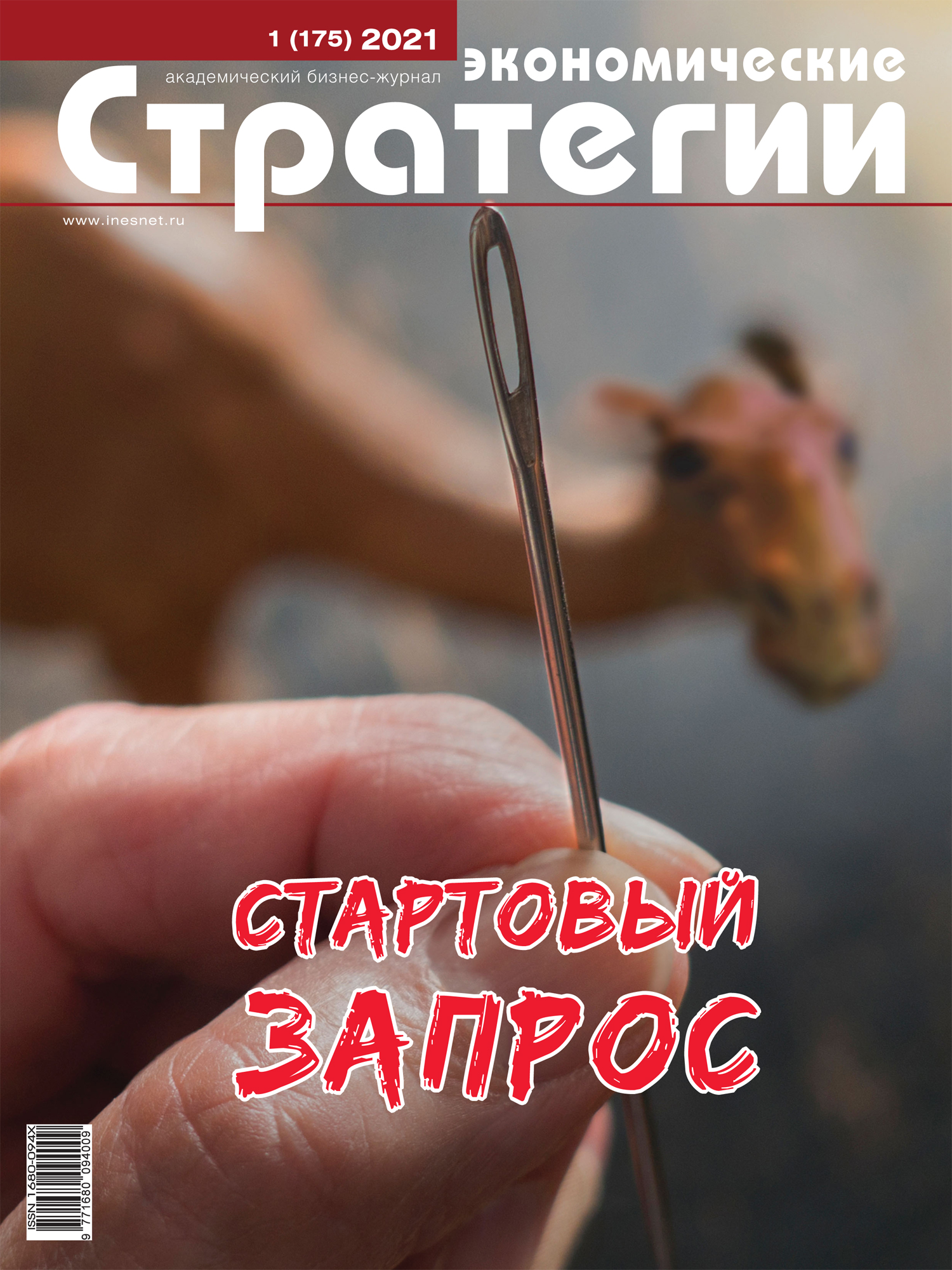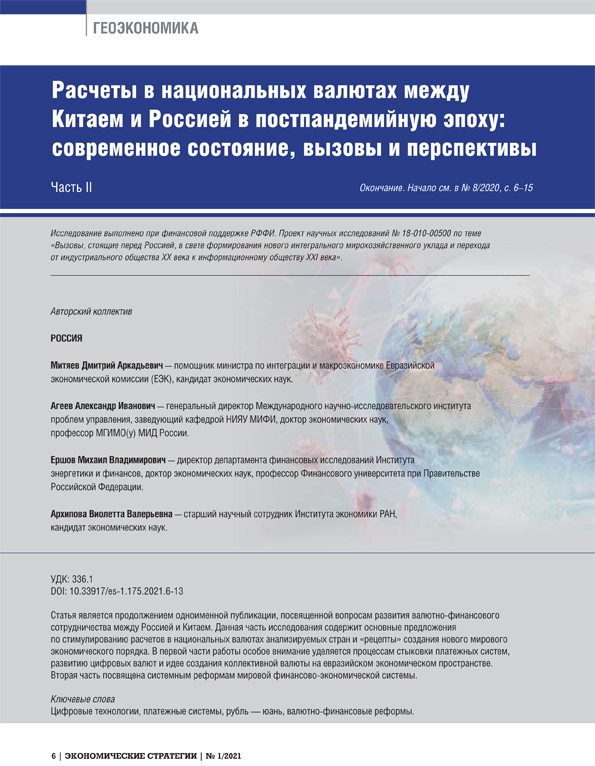Dedollarization of the Global Economy: Trends and Perspectives
DOI: 10.33917/es-4.190.2023.40-47
The quantitative indicators of dedollarization in the global economy are given. It is revealed that in the short-term the measures to abandon the U.S. dollar may have a limited impact on the global foreign exchange market, but in the longer-term the demand for the U.S. dollar may weaken. The implementation of transactions directly by countries on a bilateral basis using national currencies will thus make the global foreign exchange market more balanced. It is found that the development of dedollarization process is influenced by three major factors: the U.S. dollar’s usage as an instrument of sanctions pressure; the strengthening of the U.S. dollar; the emergence of new technological innovations. The article concludes that the development of dedollarization process along with the creation of new international payments mechanisms in the middle-term will continue to reduce the role of the U.S. dollar in the modern international monetary and financial system.
References:
1. Georgiadis G., Le Mezo H., Mehl A., Tille C. Fundamentals vs. Policies: Can the US Dollar’s Dominance in Global Trade Be Dented? Working Paper Series No. 2574. Frankfurt am Main: ECB, 2021, 47 p., available at: https://www.ecb.europa.eu/pub/pdf/scpwps/ecb.wp2574~664b8e9249.en.pdf.
2. Jamrisko M., Carson R. Suddenly Everyone Is Hunting for Alternatives to the US Dollar. Bloomberg. 21.12.2022, available at: https://www.bloomberg.com/news/articles/2022-12-21/fx-weaponization-supercharges-de-dollarization-drive.
3. World Currency Composition of Official Foreign Exchange Reserves. IMF, available at: https://data.imf.org/regular.aspx?key=41175.
4. Arslanalp S., Eichengreen B., Simpson-Bell Ch. Dollar Dominance and the Rise of Nontraditional Reserve Currencies. IMF. 01.06.2022, available at: https://www.imf.org/en/Blogs/Articles/2022/06/01/blog-dollar-dominance-and-the-rise-of-nontraditional-reserve-currencies.
5. China to Use Shanghai Exchange for Yuan Energy Deals with Gulf Nations — Xi. Reuters. 09.12.2022, available at: https://www.reuters.com/business/energy/chinas-xi-tells-gulf-nations-use-shanghai-exchange-yuan-energy-deals-2022-12-09/
6. OTC Foreign Exchange Turnover by Currency. BIS, available at: https://www.bis.org/statistics/rpfx22_fx_tables.xlsx.
7. Mazumdar R. India Seeks to Globalize Payment Systems, Keep Processing Local. Bloomberg. 17.06.2022, available at: https://www.bloomberg.com/news/articles/2022-06-17/india-seeks-to-globalize-payment-systems-keep-processing-local.
8. The Dollar Is as Strong as Ever. Isn’t It?. The Economist. 08.09.2022, available at: https://www.economist.com/leaders/2022/09/08/the-dollar-is-as-strong-as-ever-isnt-it.
9. Weinland D. China is Rapidly Rolling out Its New Digital Currency. The Economist. 18.11.2022, available at: https://www.economist.com/the-world-ahead/2022/11/18/china-is-rapidly-rolling-out-its-new-digital-currency





